Your small operating room is already crowded with essential equipment. A large, bulky monitor makes things worse, obstructing movement and creating a safety hazard for your surgical team.
The best models for small-space theaters are compact displays, typically between 19 and 27 inches. These monitors should offer versatile mounting options and a resolution—either Full HD or 4K—that is appropriate for the specific surgical procedures being performed.
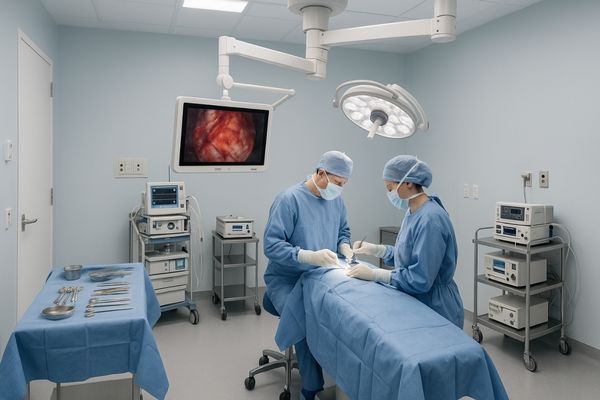
Equipping a small operating theater presents a unique set of challenges. Every piece of equipment must justify its footprint, and the surgical display1 is no exception. While a large screen can seem appealing, its physical size can quickly become a liability in a confined environment. The goal is to achieve perfect visual clarity without compromising the safety, efficiency, and ergonomic comfort of the surgical team. This requires a careful evaluation of monitor size2, image quality3, mounting solutions, and the specific visual demands of your procedures. This article explores these critical factors to help you identify the ideal display solution for your limited-space environment, ensuring that your technology enhances your workflow rather than hindering it.
Why is monitor size crucial in compact operating rooms?
You believe a bigger monitor is always better for seeing detail. In a small OR, however, that large screen is now blocking sightlines and getting in the way of staff.
Monitor size is crucial because an oversized display in a compact OR can physically obstruct movement, block sightlines between team members, and limit the flexible positioning of other essential equipment. Choosing the right size enhances safety and workflow efficiency.
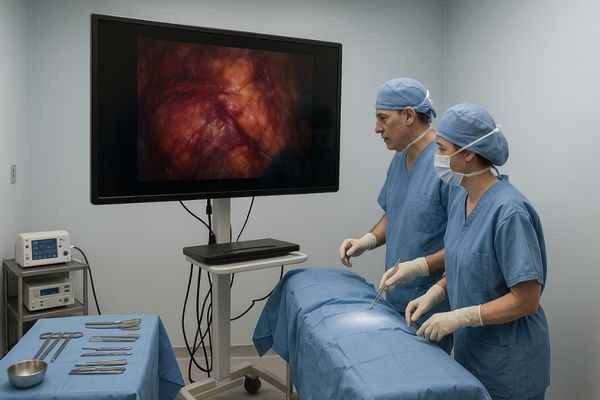
In any operating room, space is a valuable commodity, but in a compact theater, it is a critical asset. The physical dimensions of a surgical monitor4 have a direct impact on the room’s ergonomics and safety5. An excessively large display can protrude into the sterile field or the paths used by the surgical team, creating a collision risk and impeding efficient movement. It can also create a visual barrier, making it difficult for the surgeon to communicate with the anesthesiologist or circulating nurse through non-verbal cues. This obstruction of sightlines can compromise team coordination and situational awareness. Furthermore, a bulky monitor limits options for positioning other vital equipment, such as IV poles or instrument carts. The ideal monitor size creates a perfect balance, providing a clear and sufficiently large image without overwhelming the physical space. The MS247SA, a 24-inch Full HD monitor, is an excellent example of this balance, offering a generous viewing area in a form factor that integrates smoothly into spatially constrained environments without causing obstruction.
Recommended Monitor Size vs. Operating Room Area
| Operating Room Area | Recommended Monitor Size | Primary Benefit |
|---|---|---|
| < 25 m² (270 sq ft) | 19" – 24" | Maximizes free space, prevents obstruction |
| 25 m² – 40 m² (270 – 430 sq ft) | 24" – 32" | Balanced view without significant crowding |
| > 40 m² (430 sq ft) | 32" – 55" | Large format viewing for complex procedures |
Are smaller monitors compromising image quality or features?
You are concerned that choosing a smaller screen means you will miss critical anatomical details. This fear might push you toward selecting a larger, more impractical monitor for your space.
No, modern smaller monitors do not compromise on quality or features. Many compact displays (19-27 inches) offer Full HD or even 4K resolution, medical-grade color accuracy, and the same essential certifications and functionalities found in their larger counterparts.
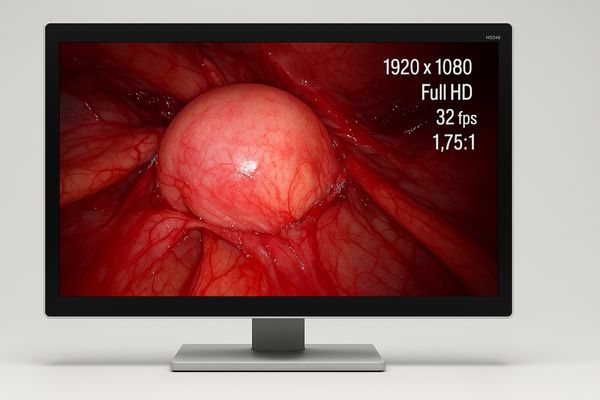
A common misconception is that a smaller display size automatically equates to lower performance. In reality, today’s display technology allows for exceptional image quality to be packed into very compact form factors. The most important metric for image sharpness is pixel density6, or pixels per inch (PPI). A smaller screen with a high resolution can actually have a higher PPI than a much larger screen with the same resolution, resulting in a crisper, more detailed image when viewed from a typical distance in a small OR. Features such as high brightness, wide color gamut, and DICOM Part 14 compliance7 are not exclusive to large-format displays. Reputable manufacturers ensure that their entire range of medical monitors8, regardless of size, meets stringent medical standards for safety and performance. The MS275P, our 27-inch 4K surgical monitor, is a perfect illustration of this. It delivers the ultra-high resolution and fine detail required for complex procedures in a size that is manageable for most operating rooms, proving that you do not have to sacrifice image quality for a space-saving design.
What mounting options help optimize space in small ORs?
Your monitor is currently on a rolling stand that takes up valuable floor space. This makes the room feel even more crowded and creates a constant tripping hazard for your staff.
Ceiling-mounted booms, wall-mounted articulated arms, and direct integration into compact equipment carts are the best mounting options. These solutions free up critical floor space and allow for flexible, ergonomic positioning of the display away from high-traffic areas.
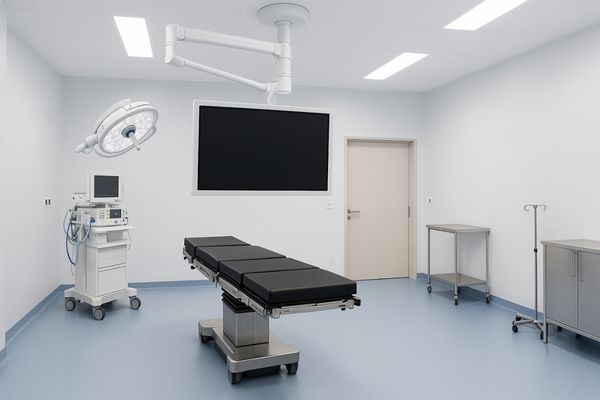
The key to maximizing space in a small OR is to get equipment off the floor. Standard monitor stands are often too bulky and inefficient for these environments. Instead, specialized mounting solutions are essential. Ceiling-mounted booms9 are the gold standard, as they suspend the monitor from above, providing the greatest range of motion and positioning flexibility without occupying any floor space. Wall mounts are another excellent option, especially when ceiling infrastructure is a constraint. A good wall mount with an articulating arm10 allows the monitor to be pulled out when needed and folded away against the wall when not in use. Finally, integrating the monitor directly onto a mobile equipment tower, such as an endoscopy cart, consolidates the system’s footprint. All these solutions rely on the VESA mounting standard11, which ensures compatibility between the monitor and the mounting hardware. The lightweight design of our MS192SA 19-inch HD monitor makes it an ideal candidate for any of these mounting systems. Its minimal weight places less strain on articulating arms, allowing for smooth, effortless repositioning.
Comparison of Mounting Solutions for Small ORs
| Mounting Option | Primary Advantage | Best Use Case |
|---|---|---|
| Ceiling Mount | Frees up all floor space; maximum flexibility | New constructions or ORs with reinforced ceilings |
| Wall Mount | Frees up floor space; good for existing rooms | Rooms where ceiling installation is not feasible |
| Cart/Tower Mount | Consolidates equipment into a single mobile unit | Procedures requiring a dedicated imaging tower |
Is Full HD sufficient, or is 4K still preferred in small spaces?
You are constantly being pushed to upgrade everything to 4K. However, the additional cost seems difficult to justify for a small secondary operating room with a limited budget.
Full HD (1920×1080) is often sufficient and highly practical for small ORs, as the closer viewing distance makes its high pixel density appear very sharp. However, 4K resolution is still preferred for procedures that demand the visualization of extremely fine structures.
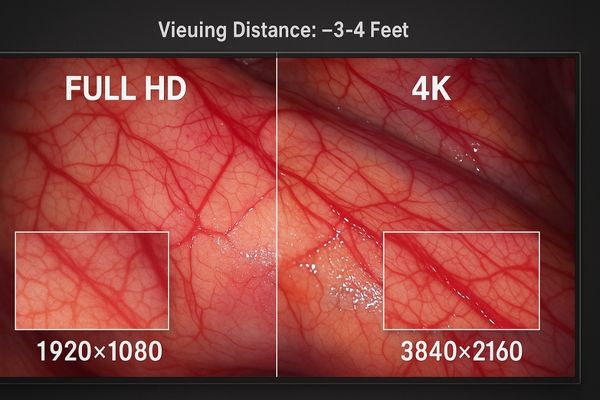
The decision between Full HD12 and 4K resolution13 should be based on clinical need and viewing conditions, not just on having the latest technology. In a smaller operating room, the surgeon and staff are typically positioned closer to the monitor. At these shorter distances, the pixel density of a 24-inch or 27-inch Full HD monitor is often high enough that the human eye cannot easily distinguish individual pixels, resulting in a very sharp and clear image. For many general surgery, orthopedic, or GI procedures, FHD provides all the detail necessary for safe and effective work. It is a cost-effective and practical choice. However, 4K resolution offers four times the number of pixels, and this additional detail can provide a tangible clinical benefit in certain specialties. In neurosurgery14, ophthalmology, or complex microsurgery, the ability to see the finest nerves and vessels can be critical. Our MS270P, a 27-inch FHD display, is a popular choice for multipurpose ORs, delivering outstanding clarity and performance for a wide range of common procedures in a practical and efficient package.
Which Reshin models are ideal for limited-space environments?
You know that you need a compact monitor for your facility. Sifting through dozens of different product specifications to find the right one is overwhelming and very time-consuming.
Our ideal models for limited-space environments are the MS192SA (19" HD) and the MS220S (22" FHD). These monitors are specifically designed to offer a compact footprint, versatile mounting options, and uncompromising medical-grade image quality for smaller operating rooms.
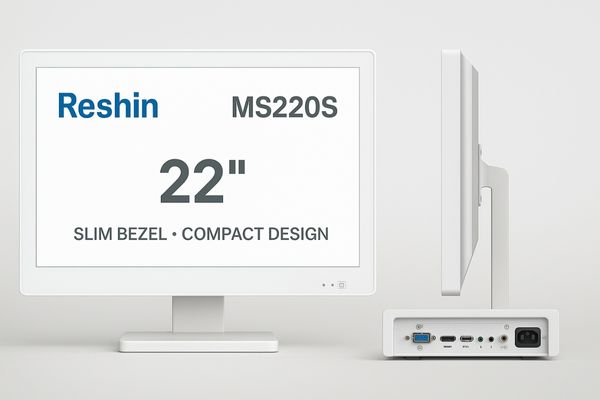
We understand the unique demands of compact clinical spaces, and we have developed specific models to meet these needs directly. Our goal is to provide solutions that integrate seamlessly without compromising the quality of care. For environments where space is at an absolute premium, such as a small procedure room or a secondary OR, the MS220S is an outstanding choice. This 22-inch Full HD monitor strikes a perfect balance between a space-saving design and a clear, detailed viewing area. It features a slim bezel and a shallow depth, minimizing its physical presence. The sealed, easy-to-clean front panel and medical-grade power supply are essential for maintaining safety and hygiene standards in a confined room. Its robust set of video inputs ensures it can connect to a wide variety of endoscopic and imaging sources without the need for bulky adapters. This model delivers the reliable, high-quality performance expected in a modern surgical setting, all within a form factor engineered to maximize the usable space in your operating theater. It is a smart, focused solution for any space-conscious healthcare facility.
Conclusion
Choosing the right monitor for a small operating room means prioritizing efficiency. A compact display, from 19 to 27 inches, combined with a smart mounting solution, delivers clear visuals without compromising workflow. To find the perfect compact surgical display for tight OR spaces, contact Reshin at martin@reshinmonitors.com.
-
Explore this resource to understand how to select the right surgical display that maximizes efficiency and safety in limited spaces. ↩
-
This link will provide insights into the importance of monitor size and its effects on surgical performance and team ergonomics. ↩
-
Discover why high image quality is essential for surgical displays and how it can enhance surgical outcomes and team performance. ↩
-
Understanding the best practices for surgical monitors can enhance safety and efficiency in the operating room. ↩
-
Exploring the relationship between ergonomics and safety can lead to improved surgical outcomes and team performance. ↩
-
Understanding pixel density is crucial for evaluating display quality, especially in medical settings. Explore this link to learn more. ↩
-
DICOM Part 14 compliance ensures medical displays meet essential standards. Discover its significance in healthcare technology. ↩
-
Choosing the right medical monitor is vital for patient care. This resource will guide you through essential features and standards. ↩
-
Explore the advantages of ceiling-mounted booms for maximizing space and flexibility in small ORs. ↩
-
Learn how articulating arms enhance monitor accessibility and save space in compact environments. ↩
-
Understanding the VESA standard is crucial for ensuring compatibility in mounting solutions for monitors. ↩
-
Exploring this resource will help you understand why Full HD is often sufficient for many surgical procedures, ensuring clarity and cost-effectiveness. ↩
-
This link will provide insights into how 4K resolution can enhance surgical precision, especially in complex procedures, making it worth considering. ↩
-
Discover how advanced display technologies improve outcomes in neurosurgery, making this resource essential for understanding its impact. ↩



